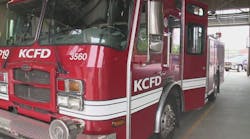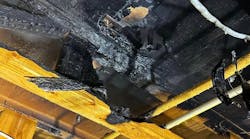Answer: A strategic marketing approach to an effective comprehensive prevention program is based on delivering code enforcement, inspections, prevention and education messages to the largest number of citizens in general and to those with the highest level of risk in particular. In this sense, the marketing plan is a tool to change behavior: social marketing in its purest form.
Last month's column noted that prevention - largely in the form of education - presents the largest opportunity for any fire department to increase its awareness in the community while achieving its primary goal: keeping its citizens safe from harm. Marketing's contribution to this goal is directed to behavior change first. The department's visibility and positive image should be the result of this "social marketing." In my opinion, it should not be the reason for achieving its visibility. This is a very important distinction. Public service marketing cannot be seen in the same way as private industry marketing anyway, especially when it is applied to emergency and safety services.
We also mentioned that the effectiveness of fire and safety education to a great degree depends on the effectiveness of its marketing. Remember that marketing is exchange for mutual gain. In this case it is the delivery of an educational message to change behavior. Code enforcement in the form of statutes and inspections, fire prevention and safety education afford the largest opportunities to affect the most people with our visibility, messages and image. It's important to remember, that prevention is a full-time job that never ends. Suppression is a tiny part of the fire protection service mix.
Motivationally speaking, it is good to know there is always something to do in our profession. The battle never ends because of the growing complexity of our society-from the influx of immigrants to the wildland urban interface to new technologies which make the environment for firefighting ever more dangerous. There is also the now constant terrorist threat as well as infrastructure issues such as the power outage in August.
The Market
The market for comprehensive prevention is large and complex regardless of the size of the community. It entails all citizens with their demographic divisions such as the old and young, the culturally diverse, and an entire range of socio-economic factors. According to Dennis Compton and John Granito, editors of the text Managing Fire and Rescue Services, the most significant factor of fire losses is the victims' income level: the lower the income, the higher the chances for a fire problem. This is not necessarily true in relation to the health problems we find in mitigating life safety such as heart disease. When targeting the market for fire and safety prevention and education, it is critical to understand "who you are talking to" and the motivations of each audience.
In her chapter on public education in the fifth edition of the Fire Chief's Handbook, Minnesota State Fire Marshal Mary Nachbar lists three categories of audiences to be educated. The first category is the potential victim such as children, seniors, adults with heart or health problems, ethnic minorities or those in a low-income area where a problem may exist. The second category deals with those having a close relationship with the victim such as siblings, parents, grandparents and day-care providers. The third category is important because it comprises those organizations with an interest in the first two such as fire departments, schools, businesses, medical providers, law enforcement, churches and health departments.
While the messages may be for the first two categories, the third may provide the funding, resources and media to deliver the message and education to the first two. The market is comprised of institutions such as schools, hospitals, churches, nonprofit organizations, service clubs and agencies, associations such as homeowners and political organizations, infrastructure agencies such parks, water, power and highways, and the small and large businesses of the community. Within the latter segment are local businesses and the regional, national and international businesses with offices in the local community.
Statistics consistently demonstrate that over 80% of fires occur in homes. Therefore, fire and life safety messages must be delivered so that they reach their eventual audience in the home. This education is now delivered through programs such as "Learn Not To Burn" and "Risk Watch" public education safety programs have now become a normal part of many schools' curricula.
In a recent meeting with Harvey Ryland, former deputy director of the Federal Emergency Management Agency (FEMA) and now CEO of the Institute for Building and Home Safety, he noted to me that if children are given new knowledge to take home to their parents, the parents tend to change their own behavior. Phil Schaenaman of Tridata Corp. tells me that one of the more effective exercises in schools is for the children to count all of the working smoke detectors in their homes and report the results in class. This exercise has led to the installation of new detectors or replacement of dead batteries. As we will learn later one of the greatest opportunities for delivering safety messages in the home is through on-site employee safety education at the place of work.
Which Problems Do We Tackle First?
In general, it is best to handle the obvious and chronic problems first (i.e. numerous fires in an area, particular kinds of consistent accidents, drowning problems, etc.). Start by asking the engine, ladder and EMS crews, "What's going on out there?" There is no question that this can be the most significant and time sensitive source of information. One might then focus on problems affecting large numbers of people, such as potential disasters (i.e. hurricanes, earthquakes, tornadoes, severe thunderstorms and wildfires). Disaster seminars can attract many people, especially if done in coordination with agencies such as the American Red Cross or law enforcement. Next, the education program might focus on seasonal problems such as riptides, heat stroke, heaters in the winter, electrical and kitchen problems. Finally, there is the entire EMS and wellness area for an aging population.
An excellent source of collection for incident data is the National Fire Incident Reporting System (NFIRS). This data system is operated by the National Fire Information Council (NFIC) and the U.S. Fire Administration (USFA). This tool is one of the best sources for providing a path to the "root" of the incident. It provides information such as fire cause, response time, staffing, equipment, and injury and death information. Well over 15,000 departments use NFIRS nationally. Local information is sent to the state fire marshals' offices. Once analyzed, the data may point to regional and statewide problems. The 43 states using NFIRS then send their data to NFIC where the combined data relates a picture of the national fire problem. National Fire Protection Association (NFPA) databases are also excellent sources of information, especially in noting problems by region and incident type.
Evaluation and Marketing Effectiveness Through Measurements
In his chapter on Comprehensive Prevention Programs in Managing Fire and Rescue Services, Jim Crawford notes that risk- and loss-reduction parameters are the most effective evaluation measurements. This means demonstrating that a particular behavior is or is not being produced after delivery of the educational material.
Surveys and questionnaires are an excellent source to test retention and behavior change. Another is demonstrating the correct practice a specified number of times. In my opinion, this last "measurement" is critical. Think about it this way. When you roll up to an incident, there are certain behaviors you perform that are second nature because of practice. In a much more modified and diminutive manner the same should be true with citizens confronted with a possible emergency situation.
You may say it is not possible to compare practices since our profession is based on certain involuntary actions that become second nature after years of professional emergency training. However, the Japanese pride themselves on the same kinds of second-nature reactions albeit at the citizen level of non-professional emergency expertise. In fact, there is a national safety academy devoted to this kind of training.
Loss reduction will always be the final measurement of the effectiveness of any program. However, there are a number of measurements any department can use to better fine-tune their approach to the market. Please feel free to contact me for a comprehensive list of prevention and education measurements at [email protected].
Optimum Leverage Through Businesses
In my experience the most effective way to deliver prevention messages to the most people is through businesses where the most people work, taking the message home where the problem lies. In addition to being a good corporate citizen and enhancing its reputation in the community and among its employees, it makes good business sense. First, of course, is maintenance of low insurance rates; second is the actual continuity of the business during and after an incident or disaster (this area is replete with opportunities for the fire department to demonstrate its value because it means the continuation of the business and its viability). Finally, there is the labor issue: employee productivity on the job as well as worker retention. Accidents and injuries at work or in the home cost businesses millions annually. Employees who know their employers care for them tend to remain loyal. It costs significant dollars to train new employees and fewer dollars to retain present productive ones.
The Advantages Of Partnership
There are multiple advantages in establishing a comprehensive prevention program in partnership with businesses in the community. From a strategic perspective, any business is a prime partner for a number of programmatic approaches. Each approach involves managing the relationship with the business. This means communication and interaction. And that means the opportunity to gain support (financial and popular) for the fire department as a byproduct of the prevention program. Such programs entail a graphic and verbal explanation of code enforcement before inspections occur.
The actual inspection is another opportunity. Pre-fire plans can be initiated, reviewed or changed at the same meeting or a new meeting. Employee safety training can occur in partnership with the firm's loss-prevention officer or a manager appointed to a coordinating position if there is no loss-prevention position. This may be the opportunity to establish a new career position for someone who may become a significant ally in the future. Such training can focus on both safety in the workplace as well as safety in the home.
How do you decide which kind of organization to approach first? This depends on the size of the market, the nature of the significant hazards in the community and local data noting recent incidents. If your department is small and volunteer and/or has limited resources, focus on the one business that has the most influence in the community for your message. It might be as obvious as a local fire extinguisher or sprinkler company or one regional office of a major insurance company. To leverage your resources you may want to tap into the Department of Homeland Security's volunteer program, especially for this particular kind of non-emergency work.
Home inspections, in particular, provide an excellent opportunity for volunteers to make a significant contribution to the department and community. Since most fires occur in homes, this is the source of the problem in many communities. You may very well find a significant amount of expertise among active retirees and teachers as well as citizens who are fascinated with the idea of being a part of the fire department. A "Citizen Academy" curriculum that includes actual "field applications" in prevention such as in-home inspections is another possibility. By the way, it is also a marketing opportunity to gain support as you achieve the prevention goal. You might even establish a Citizen Academy in coordination with a company, customizing the academy for the particular firm.
Fire and Life Safety
If the fire service in North America is to maintain its lead in fire and life safety, it must become the first and most knowledgeable source for all areas of a citizen's protection in a comprehensive and interactive way.
Prevention and education present the non-emergency areas of our service now, but can become the door or pathway to many other areas of the safety mix. These might entail insurance, detection and sprinkler companies, citizen wellness and accident prevention as well as partners with other organizations to leverage their effectiveness.
In terms of a marketing strategy the area of mitigation is one of the basic foundations for the increasing influence of the fire service in ever more widening areas while achieving its primary mission.
Ben May has over 15 years of experience creating and applying the discipline of marketing management to fire departments and emergency service organizations. He has been a firefighter and fire commissioner, and is a graduate of the Montgomery County, MD, Public Service Training Academy. May has over 25 years of experience in business-to-business marketing and sales in the U.S. and internationally. Currently, his responsibilities include developing new business at Walt Disney World's Epcot. May was fire commissioner in Woodinville, WA, from 1994 to 1998. He graduated Phi Beta Kappa from the University of Oklahoma with a bachelor of arts degree in public affairs and received his master of arts degree in international communication from the American University. May is a member of the Society of Executive Fire Officers, a trustee of the Education Foundation of the Florida Fire Chiefs Association and a board member of the Tampa Firefighter's Museum. He welcomes your feedback on the column and he may be contacted at [email protected].




